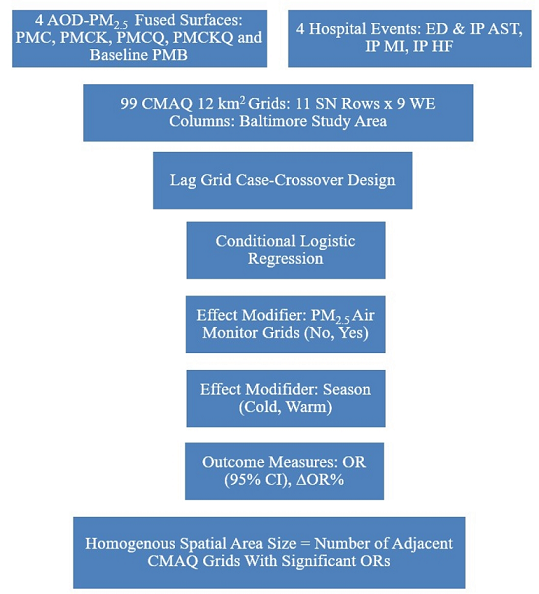Optimal use of aerosol optical depth (AOD)-PM2.5 fused surfaces in epidemiologic studies requires homogeneous temporal and spatial fused surfaces. No analytic method is currently available to evaluate the spatial dimension. The temporal case-crossover design was modified to assess the association between Community Multiscale Air Quality (CMAQ) lag grids and four respiratory-cardiovascular hospital events. The maximum number of adjacent lag grids with the expo-sure-health outcome association determined the size of the homogeneous spatial area. The largest homogeneous spatial area included 5 grids (720 km2) and the smallest 2 grids (288 km2). PMC and PMCK analyses of ED asthma, IP asthma, IP MI, and IP HF were significantly higher in rural grids without air monitors than in urban with air monitors at lag grids 0, 1, and 01. Grids without air monitors had higher AOD-PM2.5 concentration levels, poverty percent, population density, and environmental hazards than grids with air monitors. ED asthma, IP MI, and HF PMCK ORs were significantly higher during the warm season than during the cold season at lag grids 0, 1, 01, and 04. The possibility of elevated fine PM and other demographic and environmental risk factors contributing to elevated respiratory-cardiovascular diseases in persons residing in rural areas was discussed.

